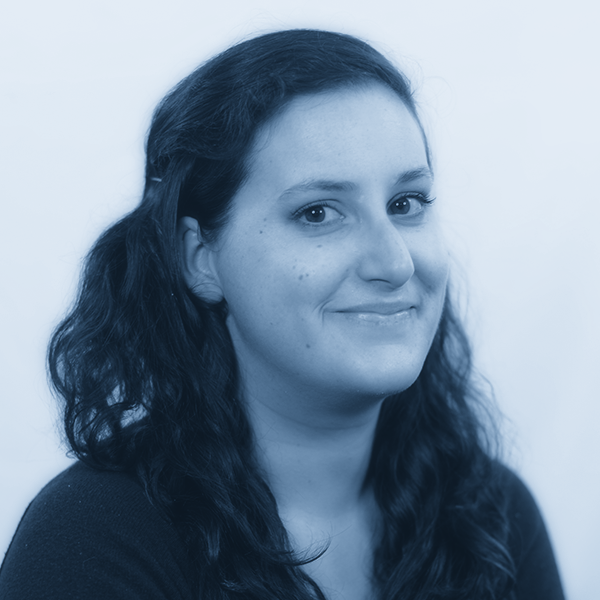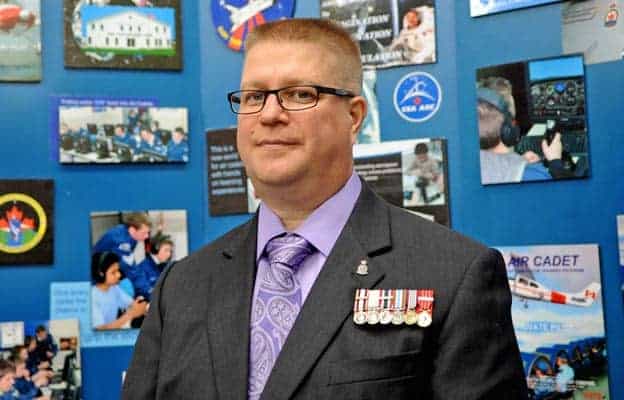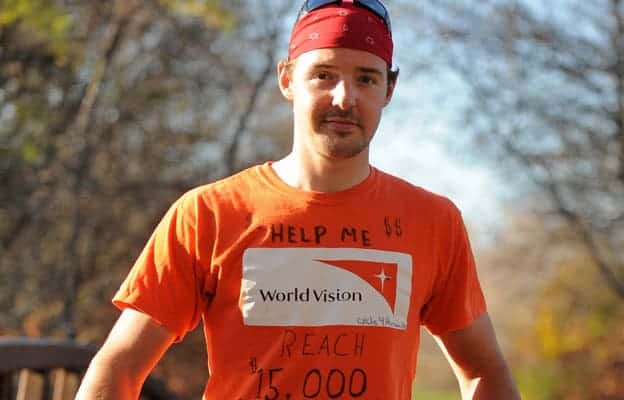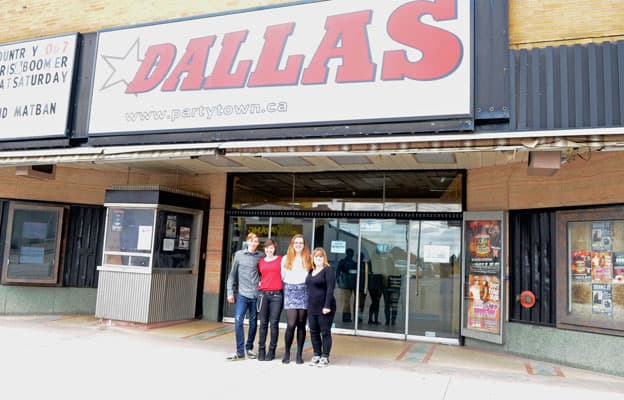The Royal Canadian Air Cadet 822 Tutor Squadron showed off their model-building skills and welcomed honoured military veterans at their third annual Model Builders Show last weekend at the Region of Waterloo International Airport in Breslau.
![The Royal Canadian Air Cadet 822 Tutor Squadron held its third annual Model Builders Show on Oct. 18 in Breslau, with guests such as artist David Soffa and Petty Officer 1st class Andrew Reinhart in attendance.[Whitney Neilson / The Observer]](https://www.observerxtra.com/content/images/wp-content/uploads/2014/10/post_news_cadets.jpg)
The fundraiser is the only one of its kind, public affairs officer Snezana Savic said. David Soffa, the Canadian artist who painted the portraits of honour was on hand. He has gone international with his art, including to Vimy Ridge and to meet the royals.
Another noted figure was Petty Officer 1st class Andrew Reinhart, 28-year veteran of the Canadian Navy, and holder of six medals of merit.
“He just retired as a vet,” Savic said. “He’s done every tour possible, a very interesting character. To actually have six medals of merit is a big deal.”
She said the model building contest is a way to show the community what the cadets do, and it’s grown internationally, drawing in people from all over Ontario and into the United States. The cadets have been featured in a magazine and have international model-building recognition.
“It opens the door to the cadet program so the community can see what cadets is all about and how the cadets fit into the community,” Savic said. “They do highway cleanup, they do cemetery cleanup. On Memorial Day they’ll put flags up on all the fallen soldiers so they’ll all have a flag, because someone has to remember.”
They’re also responsible for guarding the Preston Cenotaph on Remembrance Day. The cadets are out from 8 o’clock in the evening to 8 o’clock in the morning and then when the parade starts they’re in the parade too.
Reinhart said the event was important for him because it’s a family event.
“It’s a little overwhelming because I’m not used to having the appreciation come back this way, none of us are,” Reinhart said.
He joined the navy in 1989 because there weren’t many jobs for young people. He had been a cadet in Port Elgin where he grew up until he aged out of the program at age 19. Because of cadets he knew he wanted to do something in the police force or the military.
“I came down to Kitchener, wandered in, sat down to do an aptitude test, too smart to be a cop apparently,” Reinhart said. “They said you can take all of these on the officer side. ‘No no, I don’t want to be an officer,’ I said. So I picked the first one they called me for.”
From there he got on the train in Kitchener and went straight to Trenton. He then got on a plane, landed in Greenwood and took a bus to Cornwallis.
“Your world did a 380, not 360, 380,” Reinhart said. “Walk in and it’s some guy yelling at you. From being in cadets I knew what to expect. I made not one mistake.”
Cadets provided him with leadership courses, first-aid courses, and technical courses. He said when it comes to the leadership aspect, as you crawl up their chain of command the kids in the organization take it on themselves.
“A large portion of what the cadets do is handled all by themselves with the officers and volunteers just circling around the edges just to make sure something doesn’t go off the rails.” Reinhart said. “There’s the attitude of seeing everything in a bigger picture, instead of this narrow little ‘I gotta do this.’ Bigger scope.”
Reinhart’s been everywhere from Norway to Hong Kong through his time with the navy. In 1994 he was on the HMCS Terra Nova in Europe. They did the Murmansk Run like they would have done in World War Two. He said the navy was known for bringing the flag to different countries, and letting our dignitaries and ambassadors use our platform to showcase Canada.
They then went to the Arctic Circle and through the fjords in Norway.
“Then we went around into Russia, that was a big to-do,” Reinhart said. “It was nice. Back when we had the old steamers, we had an upper bridge, a weather bridge is what we called them. We were showing the captain all the sights as we were going in, who commanded what post. And there were lots of them, as far as your eye could see there were navy boats.”
Part of the crew went up to pay homage to the Canadians that are buried there. They stopped at the port in Hong Kong to decompress after being cooped up in a tin can, as Reinhart describes it.
But it wasn’t all nice scenery and cocktail parties, although there was plenty of both. He said Haiti in the early ‘90s was not the place to be, but there they were.
“I was in Dubai in 1998 doing the first aftermath of the war in Iraq,” Reinhart said. “Dubai was just a little sandbox and a couple buildings. Came back in 2001 and the hotel that looks like a sail was up. You had to be careful where you went. There were a lot of nice places.”
Since the beginning of his career, the navy has changed immensely. Reinhart was part of the first generation to allow women on the ships. In his later years as a cadet he helped open up the cadet squadron in Kincardine.
“I went down there as one of the lead cadets to train the kids off the street with the big eyes going ‘what are you yelling at me about? My mom doesn’t even do that,’” Reinhart said. “It teaches how you motivate a group, how to motivate individuals who aren’t quite following. It gives you skills you can use later on.”
In regards to the model builders show, this was the first time he got to see the event. He thinks it’s huge both for the cadets and for the facility. Looking back, he said he most enjoyed his time in cadets because of the camaraderie, of fitting in with a group.
“It helps kids realize that they have self-worth,” Reinhart said “Somebody might be yelling at you but he’s trying to change what you’re seeing in yourself without telling you.”









